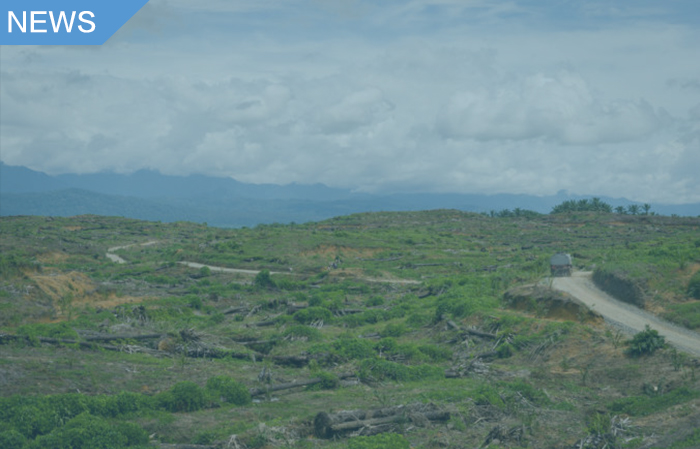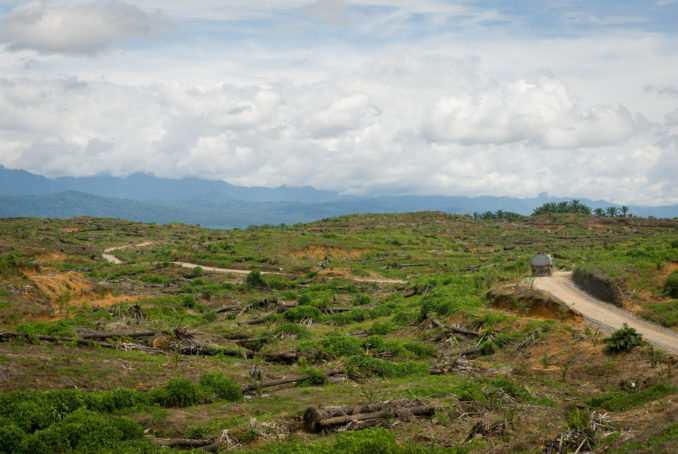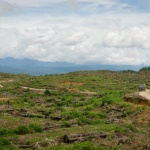非常感谢来自Michael Grove, ASLA 的分享,点击查看原文
Appreciation towards: Michael Grove, ASLA. Click for the original article
在大家积极讨论后疫情时代该如何设计健康社区时,普遍的观点都在倡导和建议“以人为核心”的设计宗旨,例如开发零接触的感应门把手或者电梯按钮;巧妙规划小区用地作为临时应急避难所或社区医院;扩建公园及林荫道,服务周边居民,让他们享受户外活动的乐趣以缓解疫情带来的精神压力。这些实用的设计方案,却可能是治标不治本。无论地区还是全球尺度范畴,支持生态建设和实现生物多样性保护才是不能忽视的重中之重。
在我看来,景观建筑师具有独特的优势来应对复杂的社会和生态问题,通过以下这四个基本策略的讨论,就疫情防控当下和未来提出理性的分析和思考。1)加强栖息地的保护2)应对气候变化3)合理的城市规划和放缓城市扩张4)支持城市和现代化农业模式。
Many of the articles I have read about how the design community should react to a post-pandemic world seem to be human-centric: advancing sensor technology to limit our need to touch door handles or elevator buttons; designing buildings to be flexible such that they can serve as temporary triage centers or hospitals; expanding our urban parks so city dwellers have more recreational opportunities post-quarantine because of our renewed appreciation of the outdoors. These are all great ideas, but they’re band-aids on a gaping wound. Until we stop disrupting ecosystems and thus reducing biodiversity, our efforts are superficial.
Instead, there are four fundamental areas that we should be focusing on, and which landscape architects have the unique skillset to lead. These include 1) championing habitat conservation; 2) fighting climate change; 3) advocating for responsible urbanization and limiting sprawl; and 4) supporting advanced agriculture. To be clear, I am not suggesting that landscape architects are going to prevent the emergence of new viruses. But if we, as a species, aim to limit our potential future exposure, landscape architects play a vital role.
▼支持生态建设和实现生物多样性保护,stop disrupting ecosystems and thus reducing biodiversity ©Flickr User – vincentraal
加强栖息地的保护
Championing Habitat Conservation
保护热带雨林是预防诸如新型冠状病毒等交叉性病毒的最重要方法之一。过度砍伐热带雨林不仅破坏野生动物的栖息地以及生物多样性,也对人类当代和子孙后代的福祉具有重大的影响。研究表明,栖息地退化和城市化发展促进了野生动物与人类的密切接触,从而增加了病毒传播的风险。新冠病毒并非第一种从动物溢出到人类身上的疾病,这种趋势可能会是下一次流行病大暴发的导火索并对全球经济造成严重威胁。实际上,世界卫生组织(WHO)发现,在过去10年中,75%的新型传染病是人畜共患病,即通过人与患病动物的直接接触,或经由动物媒介和污染病原的空气、水和食品等途径传播给人类。
研究表明,大部分人畜共患疾病的发源地来自生物多样性的地区,这些地区的野生动植物携带的病毒和病原体会导致人类新疾病的产生。例如,在热带雨林这种原生态系统下可能隐藏着大量新型冠状病毒的“亲戚”们;而身处非洲的丛林肉集市或是亚洲的野味市场,人类在处理野生动物的过程中不可避免地接触活体或冻货,极大概率的被各种细菌、病毒沾染。这些病原体本来只是潜伏在动物身上,并不会危害人类,之所以从自然界溢出,进入人类社会传播,是因为我们提供了将动物宿主传播给人类的途径。由此看来,自然生态系统并不是对全球健康,安全和经济的威胁源头,破坏这些系统的人类活动才是真正引发新兴传染病的罪魁祸首。
作为景观建筑师,我们需要与生态学家、动物学家和当地动物保护机构等交叉学科的专业人士紧密合作,避免天马行空纸上谈兵,而是落实到具体的实践设计操作中,真正做到为公共健康领域发挥作用。
Habitat destruction and biodiversity loss doesn’t only occur when we cut down tropical rainforests, though preserving rainforests is one of the most important ways to prevent future crossover viruses like COVID-19. Degraded habitats create ideal conditions for many different types of viruses to occur. COVID-19 is not the first disease to crossover from animal to human populations, but is likely a harbinger of more mass pandemics and further disruptions to the global economy. In fact, the World Health Organization notes that approximately 75% of emerging infectious diseases in humans are zoonotic, meaning that they are transmitted to us through contact with animals.
The initial emergence of many of these zoonotic diseases have been tracked to the parts of the world with the greatest biodiversity, both in the traditional and man-made sense. Traditional locations include tropical rainforests where biodiversity naturally occurs. Human-influenced conditions include places like bushmeat markets in Africa or the wet markets of Asia, where we are unnaturally mixing trapped exotic animals with humans, often in astonishingly unsanitary conditions. When we assault these wild places that harbor so much biodiversity, we are disregarding a significant aspect of this biodiversity—the unseen domain of undocumented viruses and pathogens. These microbes are not naturally human pathogens. They become human pathogens because we offer them that opportunity. Natural ecosystems are not what pose the threat—the human activity that disrupts these systems is the real culprit.
By teaming up with ecologists, conservation scientists, and citizen action groups, landscape architects have a pivotal role to play in promoting conservation as unequivocally the most important pillar of our profession, far above the artistry or craftsmanship that we promote in our professional photographs and design magazines.
应对全球气候变化
Fighting Climate Change
全球气候持续变化与来自人类破坏性活动的相结合,正在导致全球生物多样性和生态系统的崩溃。气候变化包括了两个方面,一方面指自然界漫长的气候变迁过程,另一方面则是人类活动所导致的变化。而后者,正是人们研究气候变化尤其是气候变暖关注的重点。全球气候持续变暖改变了人类和动植物的生存环境,持续的干旱、洪水、冰川融化和森林大火这些自然灾害更加速了人类的流离失所和野生动物的大规模迁徙。随着栖息地的变化,人类和野生动物地接触愈发频繁,从而大大增加了动物疾病蔓延到人类的风险。其实,和人类一样,动物会在生存空间、食物受到威胁的情况下,免疫力也随之降低,进而更容易感染疾病,并有可能释放出较高的病毒载量,最终增加了新疾病传播给与之接触的牲畜或人类的风险。
在过去的二十年里,越来越多的科学证据表明,砍伐森林引发的一系列复杂的连锁反应,为致命病原体传播给人类创造了条件。近期西非爆发的埃博拉疫情,就和人们在林区日益频繁地猎捕有关。无独有偶,高致病性的禽流感也与环境有明显的关系,如鸡群密度过大、鸡舍通风不良、饲养条件恶劣等,都可促使禽流感的发生和快速传播。根据科学家对新冠病毒的初步推测,它的中间宿主可能是蝙蝠和穿山甲,因为新型冠状病毒与它们携带的冠状病毒具有很高的序列同源性。
这种因气候变化而引起的病毒肆虐不仅限于热带地区或发展中国家那些卫生条件让人堪忧的市场。对于人类来说,那些被封存在冰川和永久冻土中万年之久的远古病毒,也极有可能成为人类最大的威胁。最近科学家在西藏融化冰川的冰芯中发现了33种被埋葬了1.5万年的病毒,其中28种对科学界来说是新病毒。全球气候变暖,冰川冻土逐渐消融将导致大量蛰伏其中的古老病毒和细菌的释放。曾几何时,摄影师镜头下骨瘦嶙峋的北极熊不再牵动我们的心弦。人类只关注自己的结果,唯一后果是剥夺更多生命以及加快物种的灭绝,怎样才能从自己做起认清当前生态环境保护的严峻性和紧迫性?试想一下, “沸腾”的地球,上涨幅度高至2米的海平面,新的世界版图中大城市几乎都掩没在水里,我们的子孙后代将如何生存?汹涌的新冠疫情迫使更多人重新审视人与野生动物,人与自然的关系,吸取教训以便更好地预防下一场疫情的爆发。
作为当代景观建筑领域的两个重要议题,生态和韧性的内在联系和差异对设计实践影响深远。作为景观建筑师,我们启用的韧性抗灾策略即时帮助了城市应对气候变化,同时鼓励实行可行性措施例如复原湿地和停止对土地的不合理开发等,让野生植物自由生长,为动物提供庇护所的同时也扭转了人类生存的重大危机。
Humanity’s purposeful destruction of the planet’s biodiversity is even more devastating to planetary balance in the era of rapid climate change. What were once stable ecosystems for millennia are transforming quicker than the species that live in them can adapt, leading to displacement and increased contact with humans. The impact is shockingly simple and linear. Droughts, floods, glacial melting, and forest fires each contribute to the accelerated displacement of millions of species. This shift leads to closer contacts between humans and wildlife, often inflicting trauma on the animal populations. Stressed animals, just like humans, become immunocompromised and thus more susceptible to disease, and more likely to shed higher viral loads. This increases the risk of spreading new diseases to the livestock or humans with which they come into contact.
The result is well-documented. Recent outbreaks of Ebola are linked to deforestation and encroaching human settlement throughout West Africa. The emergence of various avian influenzas have been traced to intensive chicken farming where crowded, unhygienic conditions elevated stress levels in the associated poultry population. Preliminary research into COVID-19 has led scientists to hypothesize that this latest coronavirus may have emerged from bats and pangolins due to a resemblance in its molecular structure to related viruses found in those species.
This risk of pathogens emerging due to climate change isn’t limited only to the tropics, or to unsanitary markets in developing countries. Recently, researchers announced the discovery of 28 previously unknown viruses entombed for 15,000 years within a melting glacier in Tibet. As the planet continues to warm, it is conceivable that even more pathogens like these could be released into the environment, with unpredictable consequences. Unfortunately, the image of an emaciated polar bear no longer tugs at our collective heartstrings. And why would it? Humans, just like any other species, are focused on our own survival first. Now is the time to shift the climate and environmental advocacy narrative from one of compassion to one of fear. You may not be able to imagine how your grandchildren’s lives will be impacted by a six-foot rise in sea levels, but when your own existence (and economic stability) is challenged by a deadly virus, you demand action—and fast. Humans are the ultimate umbrella species. If we can convince ourselves that saving the planet’s biodiversity will prevent the next outbreak, we may have a chance.
As a profession, landscape architecture has already demonstrated our value through resiliency plans to accommodate urban flooding and sea level rise. What comes next is a shift of our focus from protecting the built urban realm to a more holistic, reparative approach. For the sake of the survival of our own species, landscape architects must use our collective professional voice and commit to no longer working on greenfield sites, and instead focus on restoring our rural and peri-urban environments to pre-development conditions.
合理的城市规划和放缓城市扩张
Advocating for Responsible Urbanization and Limiting Sprawl
新冠病毒大爆发的这几个月,疫情较严重的纽约和武汉带给我们的数据似乎表征着城市高密度和频繁流动性与疫情之间的某种正相关性。逆城市化的观点开始俘获人心:低密度郊区面对疫情有较好的韧性,因为它们在设计时相互保持严格的物理隔离。如果进一步结合城市框架和数据,不难发现,这种说法看似无懈可击,实则却并不严谨。现代社会这种大规模恐慌性公共卫生事件,特别考验一个国家和城市的公共治理水平。从这次新冠疫情的应对来看,人口密度从来不是城市化的上限,城市的治理水平才是上限,并且高密闭空间内的近距离接触与城市密度不可混为一谈。拿纽约州来举例,纽约市近郊的威斯特彻斯特(Westchester )和洛克兰(Rockland) 郡的新冠发病率几乎是曼哈顿城的三倍。我们从这里不难看出,问题的根源在于经济体系中收入的不平等性。低收入人群家庭生活空间狭小,疫情期间迫于生计和工作类型不得不继续出门工作,进而成为新冠病毒的目标对象。日益高涨的反城市情绪对城市的威胁可能并不亚于新冠疫情本身。相较于对动植物栖息地毫无节制地掠夺占领,我们应该建设更多、更好的公共场所,改善城市规划框架,促进城市的可持续发展。
随着城市生态环境危机和自然灾害日益严重,提升城市韧性、促进城市生态系统的完善已成为当前学界的共识。搬离人口稠密的城市,选择那些密度低的郊区并不会消除病毒传播的风险。由于伐木、采矿,城市肆意扩张和人口增长而造成的原始森林的破坏,让我们再次减少了人类与病毒之间的自然屏障。
保持生物多样性可以帮助人类分担疾病的传播速度,近年来发病率攀升的莱姆病就是一个很好的例子。由于人类活动范围的不断扩张而破坏了自然平衡,莱姆病高发区内的食肉动物(如狼或野猫)越来越少,这些动物的存在曾经很好地抑制了病原菌的携带者——啮齿类动物。归根结底,保持生物多样性、维持相对稳定的自然平衡是十分必要的,因为这同时也是在保护我们人类自己。
综上所述,身为景观建筑师的我们该如何去做呢?回溯到19世纪末20世纪初,当时美国工业化程度的加速,促进城市建设例如供水循环和污水处理的完善,进而推动了公园运动的兴起。经过以美国景观建筑学之父弗雷德里克·罗·奥姆斯特(Frederick Law Olmsted)为首的一系列努力,保留自然特色的城市公园成为当时城市的新景观,也使得现代景观学正式登上历史舞台。20世纪中期,伊安·麦克哈格(Ian McHarg)从生态角度理性地分析了人与自然的关系,以及社会各阶层的不公平待遇。当前残酷的新冠疫情对生活条件堪忧的贫困阶层造成巨大影响,进一步凸显严峻的种族和贫富差距的现实问题。
这些因环境恶化、社会发展不平衡导致处在居住环境危机边缘的群体,多数为外部原因导致,自身被动接受。他们受到社会的忽视,被边缘化,景观建筑行业介入的也很少,因此,景观建筑应去关注他们,提供人道与人文设计关怀,并通过努力让他们得到更多的社会关注,共同改善现状,体现社会的平等性。
One COVID-19 reaction that has been particularly alarming is the increasing traction of the anti-density movement. Headlines proclaiming how sprawl may save us and that living in cities puts citizens at higher risk for contracting the novel coronavirus are deceptive. Recent studies have debunked this myth, finding little correlation between population density in cities and rates of COVID-19, instead attributing the spread of the virus to overcrowding due to inequity and delays in governmental responsiveness. Mounting evidence suggests that COVID-19 is primarily transmitted through close contact in enclosed spaces. Internal population density within buildings and, more specifically, within shared rooms inside buildings is what drives this—not the compact urban form of the city. In New York, for example, COVID-19 cases are concentrated in the outer boroughs, and suburban Westchester and Rockland counties have reported nearly triple the rate per capita than those of Manhattan. The real issue is the systemic economic inequity which forces lower income people to live in overcrowded conditions, regardless of location. Cities are not at fault. Again, global sprawl into sensitive habitats is the problem. Cities, in fact, are the answer. The more densely we build, the more land we can conserve for nature to thrive and viruses to be contained.
Our response to the pandemic absolutely highlights the need for an overhaul of existing approaches to urban planning. Moving out of dense cities into the open space and social distancing afforded by the suburbs is exactly the type of knee-jerk reaction that we must avoid. The disruption of pristine forests due to logging, mining, urbanization, and population growth is bringing us closer to species with which we have rarely had contact. By infringing on their habitats, we are again reducing the natural barriers between humans and host species, creating ideal conditions for diseases to spread.
This is especially evident in the fragmented forests of our suburbs, where development patterns have altered the natural cycle of the pathogen that causes Lyme disease. When humans live in close proximity to these disrupted ecosystems, they are more likely to get bitten by a tick carrying the Lyme bacteria. When biodiversity is reduced, these diluted systems allow for species like rodents and bats—some of the most likely to promote the transmission of pathogens—to thrive. This essentially means that the more habitats we disturb, the more danger we are in by tapping into various virus reservoirs.
So what can landscape architects do? We can remember that our purpose is to be at the forefront of safeguarding public health. In the late 19th and early 20th century, cities benefitted from engineering improvements to water supplies and sewerage. This set the foundation for luminaries like Frederick Law Olmsted to design some of our most beloved parks. By the mid-20th century, the environmental crisis documented by prominent thinkers like Ian McHarg further exposed societal inequities that still exist today. The luxuries of wealth and the cruelty of poverty are exacerbated in the current pandemic. The threat of disease remains greater in the most vulnerable corners of society. People hardest hit by COVID-19 are the urban poor, whose pre-existing conditions are a result of our complacency when it comes to issues of environmental justice and equitable access to nature.
It is incumbent upon us as landscape architects to petition government leaders to stop funneling money to signature projects in already wealthy neighborhoods, and instead ensure that new parks are built in underserved communities. By demanding equitable policies for public open space, we can leave a legacy that allows all citizens of our post-pandemic cities to thrive.
支持城市和现代化农业模式
Supporting Advanced Agriculture
建立密集型城市的方案意味着同一片土地需要养活更多的人,而我们还能同时兼备恢复甚至扩大野生动植物的生存空间吗?其实随着上世纪70年代环保思潮的兴起,越来越多美国人就已经认识到,大规模工业化的农业模式浪费土地资源、石化能源和破坏环境。随之带来食品安全问题,并造成人与土地、人与自然的割裂,是不可持续的发展方式。于是,都市农业、生态农业这些新兴农业开始在对大规模工业化农业的反思中应运而生,形成潮流。大规模地开垦耕地导致大面积的森林和草原遭到砍伐和焚毁,破坏程度远远超过人类社会的扩张。例如,1998年至1999年间导致马兰西亚百余人丧生的尼帕病毒疫情。由于森林大火和与厄尔尼诺现象有关的干旱,导致果蝠开始与猪共同将农场的果树当作食物,使得病毒更容易的从果蝠传至猪和人类。
新冠病毒的爆发并非偶然,在一些发展中国家的农贸生鲜市场中可能存在贩卖野生动物的交易活动,这些被关在笼子里面的飞禽走兽在未经卫生处理的情况下被屠宰和食用,导致新冠病毒或其他未知病原体从动物转移到人体的机会增加。虽说“民以食为天”,但绝非所有的食物都适合人类。事实上,我们的祖先经历了几千几万年的反复筛选与淘汰,早已留下了一份包括鸡、鸭、鱼、牛、羊、猪等动物在内的宝贵食谱,这些也正是最适合后来人吃的食材。对于农场脏乱差的卫生条件、刀耕火种的原始农业以及来源不明、未经检验的食品,当地监管部门应该担起责任,采取有效措施杜绝后患。新型植物蛋白的研究和垂直农场的开发等都可以为现代人类提供丰富的饮食营养。
作为景观建筑师的我们应当积极面对大规模养殖引发的生态破坏问题,合理利用有限的自然资源,在农业健康持续发展和生态环境保护之间寻求平衡。同时,作为“农业向城市推进”的提倡者,我们需要将城市农场与景观设计相糅合,满足人们对新鲜而安全的食品的需求,并从专业角度进行科学调研提供发展策略,积极推广城市农业景观设计方案,以实现可持续的食品支持系统。
A logical question that arises from the argument for building denser cities and allowing the rest of the planet to revert to a mostly pre-development state is where our food will then come from. The answer is, we will have to double down on implementing innovative approaches to sourcing what we eat. Our current agricultural methods are unsustainable, damaging, and even negligent. On the whole, deforestation and habitat loss is primarily a result of the expansion of agriculture and overgrazing much more than from sprawling human settlement. Viruses linked to bats emerged because of the loss of traditional bat habitat due to farming. Nipah virus for example, which originated in Malaysia, was linked to an escalation of pig farming and fruit production. Fruit bats, displaced by drought-induced forest fires, began feeding on fruit trees grown on farms that also raised pigs. This new proximity enabled the virus to crossover from bats to pigs to humans.
Viruses like COVID-19 and other pathogens are also likely to jump from animals to people in the informal markets of developing nations where species ranging from birds to mammals to rodents are caged, sold, and slaughtered in densely populated areas with poor sanitation. Although changes to these centuries-old practices require a cultural shift and top-down policies to reduce their risks to society, now is the time for bold action. The era of unhygienic farming, slash-and-burn agriculture, and unregulated food sources must end now. New technologies like plant-based protein and new methodologies like vertical urban farming must be rapidly adopted.
As activists for the responsible use of natural resources, landscape architects must speak out against the ravages of corporate farms on the environment. We must advocate for community-based agriculture. We must integrate urban farming and productive landscapes into all of our projects to enhance food security. And we must continue to research, test, and aggressively campaign for revolutionary transformations to the way we source our food.
未来任重道远,开辟前进道路
A Critical Path Forward
景观建筑学发展至今,已成为建筑设计行业内容最为广泛的专业之一。对于那些还以为景观建筑就是种种花草的片面理解,景观建筑师应该为自己发声。正如弗雷德里克·劳·奥尔姆斯特德(Frederick Law Olmsted)塑造的应对工业化健康危机的城市公园、伊安·麦克哈格(Ian McHarg)倡导的生态规划论,Hideo Sasaki 亦强调综合性景观建筑学科的建设观点。从行业角度思考,探索面向健康、安全、宜居的生态环境是我们义不容辞的责任。
This is a pivotal moment for all landscape architects to put our skills to vital use. It is an opportunity to rewrite our manifesto and alter the course of the profession. For those who still don’t know what landscape architecture is, this is our chance to shed its cloak. Just as Frederick Law Olmsted shaped parks that responded to the health crisis of the time, Ian McHarg advocated for environmental action, and Hideo Sasaki opined about the opportunity to diverge from designing gardens for the 1%, we must define a new trajectory for the profession of landscape architecture. Now is the moment to put the health of the planet before any human desires, and to lead with our conviction that landscapes and ecology must drive the decision-making process—not for personal fame or fortune—but for the sake of our shared humanity, and of our very existence.
本文作者:Michael Grove, ASLA
迈克尔·格罗福(Michael Grove)为Sasaki公司的景观、市政与生态理事会成员。这个国际规划和设计公司总部位于美国波士顿,在中国上海也设立了分公司。
Author: Michael Grove, ASLA
Michael Grove is the Chair of Landscape Architecture, Civil Engineering, and Ecology at Sasaki, a global design firm with offices in Boston and Shanghai.
More: Michael Grove, ASLA,Click for the original article


